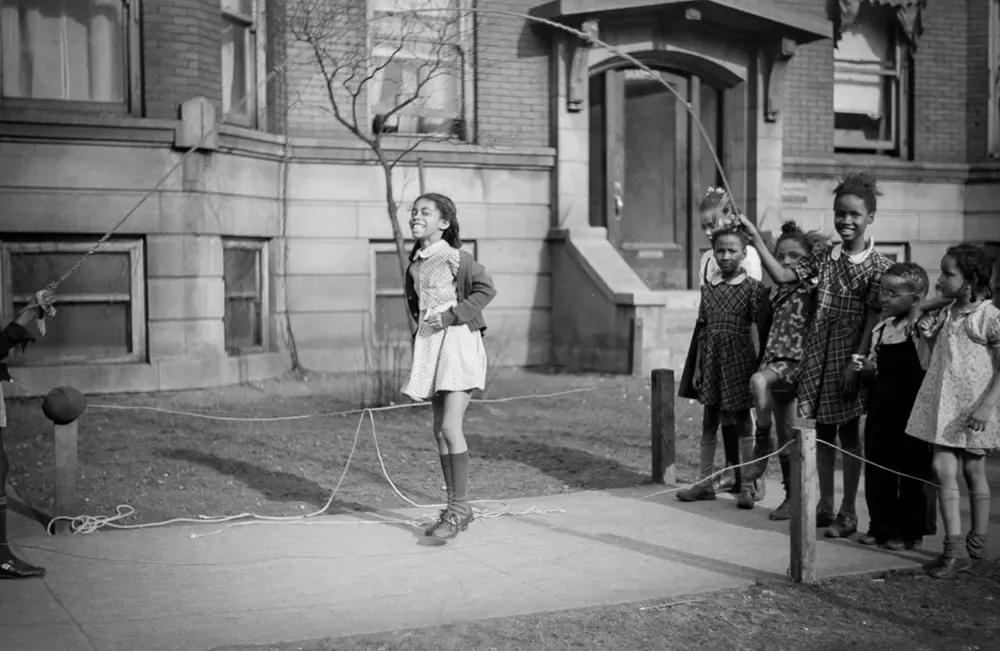Children Often Went Through Their Day With No Parental Supervision
The good old days vary from one generation to the next. For many people, though, the good old days were the 1960s. It was a simpler time when parents let their kids run loose without worrying about any possible dangers. Kids could take a few dollars and see a movie and grab some snacks while bringing home some change. As much as we love the decade, it wasn't always sunshine and roses. Check out some of the things kids did in the 1960s that would horrify us today.
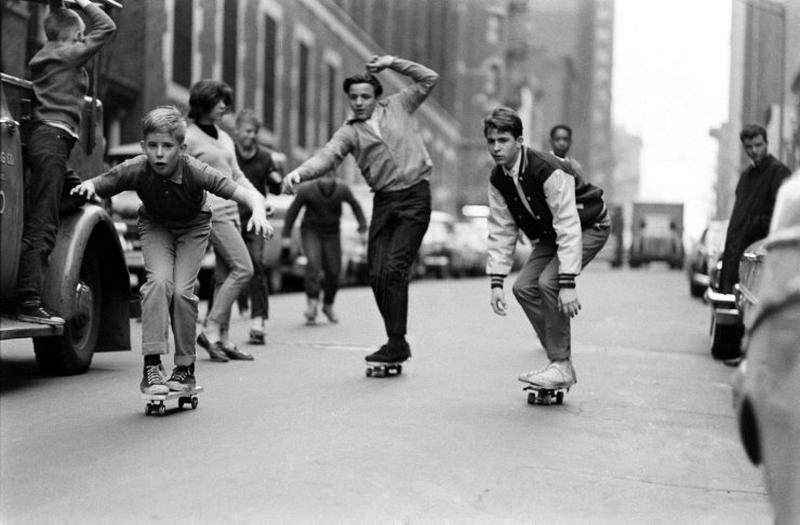 We keep going back to the lack of parental and adult supervision because it's so different from the modern world. Shows like "Unsolved Mysteries" taught us that anything can happen and we need to protect our kids. There are even networks that show true crime series nearly every hour of the day. While kidnappers and murderers existed in the 1960s, the stories sounded more like urban legends than things that happened to real people. Whether it was teens hanging out with their friends all day or a group of kids spending hours in a playground, parents assumed they were fine.
We keep going back to the lack of parental and adult supervision because it's so different from the modern world. Shows like "Unsolved Mysteries" taught us that anything can happen and we need to protect our kids. There are even networks that show true crime series nearly every hour of the day. While kidnappers and murderers existed in the 1960s, the stories sounded more like urban legends than things that happened to real people. Whether it was teens hanging out with their friends all day or a group of kids spending hours in a playground, parents assumed they were fine.Kids Were Free To Play With Fireworks Unsupervised
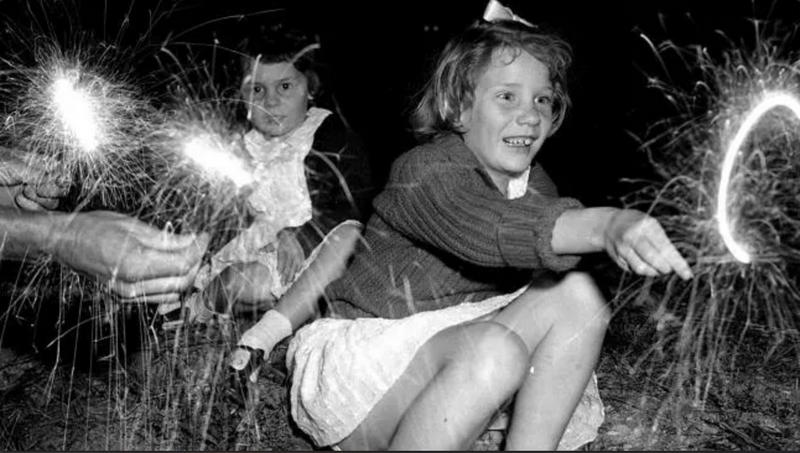
Many states have strict rules and regulations on purchasing fireworks now because they want to keep residents safe. In the 1960s, kids could walk into almost any neighborhood store and use their allowance money to buy fireworks. These weren't the black snakes and sparklers you see today either; they were real fireworks that had a real impact. Around the 4th of July, the sound of firecrackers was a common sound in most neighborhoods.
If you don't think this sounds too bad, keep in mind that the fireworks didn't have modern safety regulations and that they usually didn't have adult supervision. Not only was there a risk of one going off in their hand, but they could also damage property when they played with or threw them. This photo shows another potential danger as kids shook fireworks that produced a lot of sparks around others.
Junk Food Diets Were The Norm
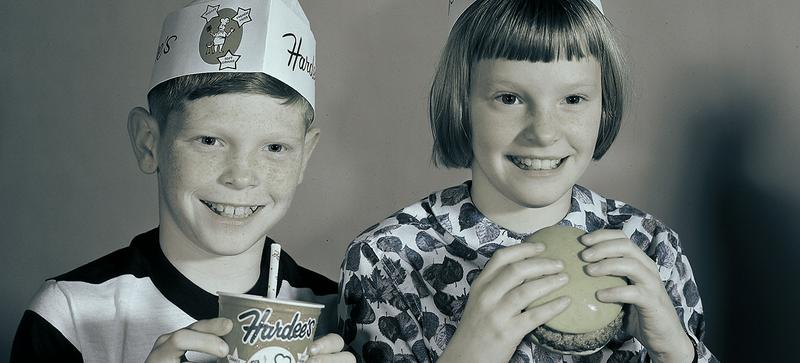 The 1960s led to a rise in junk food production and consumption. While our image shows kids enjoying a Hardee's meal, this was far from the only fast food chain spreading through the country at the top. These restaurants made it easy for parents to get food on the table when they didn't have a lot of time. As women slowly joined the workforce, they turned to junk food and fast food to feed their families. Even moms who stayed at home opted for some of these foods due to the influence TV ads had on them. Brands even sponsored popular shows.
The 1960s led to a rise in junk food production and consumption. While our image shows kids enjoying a Hardee's meal, this was far from the only fast food chain spreading through the country at the top. These restaurants made it easy for parents to get food on the table when they didn't have a lot of time. As women slowly joined the workforce, they turned to junk food and fast food to feed their families. Even moms who stayed at home opted for some of these foods due to the influence TV ads had on them. Brands even sponsored popular shows.While junk food was slightly healthier back then, it was never healthy. Ruffles and Sprite debuted during the 1960s as did Pop-Tarts and Pringles. Moms no longer needed to make food from scratch for kids' parties because they could reach for junk food and keep guests happy. Some believe there were more snack foods consumed in the 60s than today.
Playground Equipment Was One Step Above A Death Trap
 While we're on the subject of kids playing, why not take a look at some of the equipment they used in the 1960s? The Witch's Hat looked like a pointy hat and had metal bars with wood seats. On top of kids falling off as it spun, they could catch their hands and feet in the bars. This image shows a similar piece of equipment called a Maypole with ladders kids clung to as they spun around. Just imagine what would happen if someone wanted to jump off or hop off as other kids kept running.
While we're on the subject of kids playing, why not take a look at some of the equipment they used in the 1960s? The Witch's Hat looked like a pointy hat and had metal bars with wood seats. On top of kids falling off as it spun, they could catch their hands and feet in the bars. This image shows a similar piece of equipment called a Maypole with ladders kids clung to as they spun around. Just imagine what would happen if someone wanted to jump off or hop off as other kids kept running.No One Wore Seatbelts

In the 1960s, cars usually had bench seats in the front and back. Parents thought nothing about heading to the grocery store or even taking a vacation with their kids bouncing around in their seats. Kids loved sliding across the seats and feeling their stomachs rise and drop when they went over hills. The increase in seat belt usage over the years had a big benefit, though, as it kept passengers safe.
Trampolines Were A Totally Acceptable Toy

When you picture trampolines, you probably think about the modern designs that come loaded with safety features. Most modern ones even have a huge net around the jumping pad to ensure kids don't fall out. Jumpers growing up in the 1960s weren't so lucky. Safety features were decades in the future, and injuries were common. Imagine jumping on a pad with sharp metal implements and huge metal coils you could easily fall into. That gives you an idea of what trampolines looked like in the 60s.
Though invented in the 1930s, it took World War II and the following years for trampolines to catch on with kids. They loved knowing they jumped on the same trampolines astronauts did while training for their journey to space. While many parents appreciated their interest in science, they weren't as fond of the injuries that trampolines caused.
Kids Were Allowed To Walk To and From School Alone
 Who needs buses when you can walk to school? During the 1960s and beyond, parents had no problem letting their kids walk to and from school. Neighborhoods had designated crosswalks that showed kids where to cross the street, as you see in this photo. Parents trusted their kids to get there and back in one piece. Kids even played with their friends for hours, only coming home when it started to get dark outside.
Who needs buses when you can walk to school? During the 1960s and beyond, parents had no problem letting their kids walk to and from school. Neighborhoods had designated crosswalks that showed kids where to cross the street, as you see in this photo. Parents trusted their kids to get there and back in one piece. Kids even played with their friends for hours, only coming home when it started to get dark outside.No One Wore A Helmet
 You were almost as likely to spot an alien as you were to see a kid riding their bike while wearing a helmet in the 1960s. This was the generation that saw Schwinn release the Sting-Ray, a bike designed to mimic the lowrider motorcycles popular in the West. Kids who wanted to look big and bad while riding down the street didn't want to ruin their look with a helmet, let alone any other protective gear. It wasn't just kids, either. Adults also didn't wear helmets.
You were almost as likely to spot an alien as you were to see a kid riding their bike while wearing a helmet in the 1960s. This was the generation that saw Schwinn release the Sting-Ray, a bike designed to mimic the lowrider motorcycles popular in the West. Kids who wanted to look big and bad while riding down the street didn't want to ruin their look with a helmet, let alone any other protective gear. It wasn't just kids, either. Adults also didn't wear helmets.How did they stay safe then? As you can see from this photo, it often came down to their clothing. Riders knew that layers, along with long pants and sleeves, would help them avoid road rash. For those who crashed their bikes, their scars became a source of pride. They got a kick out of showing the asphalt and rocks embedded in their skinned knees.
It Was Totally Fine To Hitchhike

While some kids look forward to turning 16 and getting their first car, not everyone is as lucky. Today's teens can rely on rideshare services like Uber. Those lucky enough to get a license in the 60s often had to share vehicles with mom or dad. The only other option was a taxi, which was far from affordable. Hence, there was a rise in hitchhiking during this decade.
Catching a ride was as easy as standing on the side of the road and sticking out a thumb. Teens didn't worry about who might pick them up because most viewed hitchhiking as safe. Hundreds of people even headed to Woodstock and other concerts near the end of the decade this way. The rise of physical attacks on hitchhikers in later years slowly reduced the practice, leaving hitchhiking an artifact of a past generation.
Sunscreen? No Thanks
 The 1960s was a time when kids spent as much time outside as possible. Unlike today, where kids often sit inside to watch Netflix or play video games, 60 kids wanted to roam free. Families purchased pool passes in May and expected their kids to spend nearly every nice day at the pool. It might horrify you to know that despite spending 4-8+ hours outside, no one wore sunscreen.
The 1960s was a time when kids spent as much time outside as possible. Unlike today, where kids often sit inside to watch Netflix or play video games, 60 kids wanted to roam free. Families purchased pool passes in May and expected their kids to spend nearly every nice day at the pool. It might horrify you to know that despite spending 4-8+ hours outside, no one wore sunscreen.Who could blame them, though? The first chemical sunscreen product didn't hit the market until the 1930s. Though some soldiers wore sunscreen during World War II, it wasn't a habit they continued when they got home. For most kids growing up in the 1960s, sunburn was a part of life. They just assumed their skin would turn red after being outside, not knowing it would increase their chance of cancer later.
Kids Regularly Drank From The Water Hose
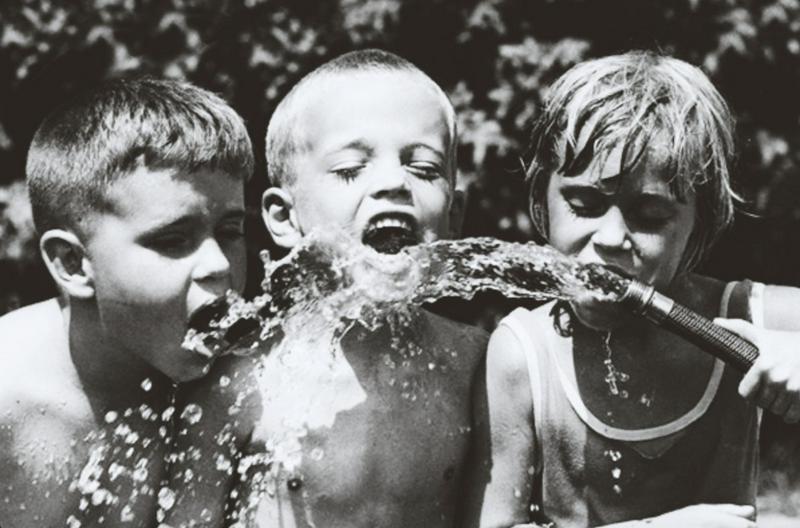 With all the chemicals used in modern products, parents are quite protective over what their kids drink. Some parents don't even let their kids drink from plastic water bottles and instead send them to school with reusable bottles. If you were a kid in the 1960s who wanted some water, you didn't reach for a bottle because the garden hose was right there. A quick sip was all you needed before you got back to the action.
With all the chemicals used in modern products, parents are quite protective over what their kids drink. Some parents don't even let their kids drink from plastic water bottles and instead send them to school with reusable bottles. If you were a kid in the 1960s who wanted some water, you didn't reach for a bottle because the garden hose was right there. A quick sip was all you needed before you got back to the action.While it might not sound too bad, remember what happens to a water hose. It sits all day and every day. Kids drag it around the yard where it picks up germs and dirt. On top of that, they can attract urine and feces from both wild and neighborhood animals. The smiling kids featured in this photo probably wouldn't smile if they knew what lurked on that hose.
Spanking Was A Normal Punishment
 Spanking wasn't just normal, it was accepted. TV shows and movies like "Yours, Mine and Ours" and "Bonanza" featured entire stories that involved someone spanking a child for acting up. There was a belief that striking a child with an open hand or palm would scare them into behaving. In addition to using their hands, some parents relied on heavy instruments like belts or paddles. In some cases, they even use a small twig called a “switch” from a tree.
Spanking wasn't just normal, it was accepted. TV shows and movies like "Yours, Mine and Ours" and "Bonanza" featured entire stories that involved someone spanking a child for acting up. There was a belief that striking a child with an open hand or palm would scare them into behaving. In addition to using their hands, some parents relied on heavy instruments like belts or paddles. In some cases, they even use a small twig called a “switch” from a tree.If you assume it was just some parents who relied on corporal punishment, think again. Not only was it common in most homes, but schools even used spanking. Teachers didn't even need permission from the child's parents. Imagine coming home from school to tell your mom a teacher hit you and hearing her ask what you did wrong. That's what life was like for kids in the 60s.
Toys Were Definitely Not Safe

One of the more dangerous toys of the decade is easily the Atomic Energy Laboratory from the A.C. Gilbert Company. Though it was too expensive for some kids, those who had it were exposed to some harsh chemicals and even radioactive elements. The kit even came with instructions on how to hide a radioactive sample and find it.
Kids Played Outside Without Supervision
 Before Ted Bundy and other serial killers picked up kids off the street, parents felt comfortable letting their little ones out with little to no supervision. It was nothing for a child to leave the house in the morning and come home for dinner. In some cases, they didn't come home at all. They simply called from a friend's house after getting an invitation to spend the night. Many families also had a streetlight rule. Kids knew they could play outside as long as they wanted but they needed to be home before the streetlights came on at night.
Before Ted Bundy and other serial killers picked up kids off the street, parents felt comfortable letting their little ones out with little to no supervision. It was nothing for a child to leave the house in the morning and come home for dinner. In some cases, they didn't come home at all. They simply called from a friend's house after getting an invitation to spend the night. Many families also had a streetlight rule. Kids knew they could play outside as long as they wanted but they needed to be home before the streetlights came on at night.This might horrify modern readers, but life was much simpler in the 60s. Kids could walk or ride their bikes to the store to grab an ice cream cone and a soda or some candy and a comic book. It wasn't until later decades that parents learned of the dangers lurking outside.
Cribs Weren't Safe

Seeing the flimsy cribs used in the 1960s would terrify any modern parent. Before doctors discovered SIDS, there was crib death, the explanation given for the deaths of more than 10,000 kids across the decade. This term applied to most infant deaths that occurred inside cribs. Some cribs had loose parts that acted as toys for kids but also served as a choking hazard. Others had side panels that could easily drop down and send kids flying to the floor.
Other dangers included the cut-out elements and wide spaces between the slats. Not only could babies wiggle through and hit the floor, but there was also a risk of them suffocating when they became stuck. On top of those dangers, many wood cribs used lead paint. Since babies love to put things in their mouths and put their mouths on things, it's clear why these cribs went away.
There Was No Childproofing

Childproofing is so common today that there are even companies that come in and secure homes. From cabinets and toilets to furniture and stairs, you can keep your kids safe from everything potentially dangerous in your home. Childproofing wasn't even a thought for most parents in the 60s. Not only did they let their kids spend hours outside, but they didn't worry about what they would or could do at home.
The lack of childproofing applied to the outside, too. This picture shows a group of kids of different ages playing with toys that don't use any modern safety regulations. The boy in the back could easily move his ride-on toy right into the street, and the kids in the front could see their ball roll under a nearby car. Don't forget about the lack of a fence either. No one thought about what could happen.
It Was A-OK To Ride In The Back Of A Pickup Truck

While it's a terrifying thought today, it was a lot of fun for kids in the 60s. On longer trips, they'd keep coolers in the back and pass drinks and food to their parents in the cab. Some families were lucky enough to have a camper top, but others stayed exposed to the elements. They even saved money on hotel rooms by sleeping in the bed under the stars.
Toy Guns Were Everywhere

You will still find some toy guns in stores today, but they were everywhere in the 1960s. Cowboys and Indians and Cops and Robbers were two of the decade's top imagination games, both of which involved weapons. Those playing Cowboys and Indians needed guns to save the day, while the Cops in Cops and Robbers used guns to stop criminals in their tracks. Modern guns often use neon colors and designs that make them look fake, but the old toy guns looked just like the real thing.
Even more horrifying were cap guns. They came in different designs to look like the guns used by cops or sheriffs in the Old West. Cap guns often worked with a roll of “caps” that fit inside. When the child pulled the trigger, the gun put pressure on the cap, which caused it to explode and produce both smoke and a noise that sounded like a gunshot.
Playing With Mercury Was Common

Liquid mercury was a common substance found in classrooms during the 1960s. Many adults have fond memories of their teachers passing around balls they held in their hands and passed to each other. Not only was mercury available in school, but they had it at home, too. This ad shows The Chemical Outfit from The Porter Chemical Company. This kit included tons of dangerous chemicals and encouraged kids to put their hands on mercury to see what it could do.
There are a few reasons kids' science kits no longer include mercury. Research proved that mercury produces fumes that are dangerous to kids. They can handle it or inhale it and not show any symptoms for years. Exposure can cause tremors and mood swings. These are just some of the many reasons why doctors no longer recommend you even keep and use a mercury thermometer at home.
Kids Were Constantly Being Exposed to Lead

Lead paint was one of the most common types of paint used for generations. Some brands even ran ads about how their high lead content created a brighter and crisper finished paint. Though the League of Nations spoke out about its use in the early 20th century, it wasn't until 1978 that the federal government banned lead paint in the United States. You can't underestimate just how much lead paint existed back then.
In addition to the paint on walls and trim pieces, manufacturers used lead paint on everything from toys to cars. In this photo, you can see lead paint on both wood blocks and small animal toys as well as a tea set. The developing bodies of kids absorbed the lead paint just from being around it or playing with toys that used it. Exposure to the paint causes damage to various parts of the body and leads to mental and behavioral problems.


